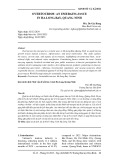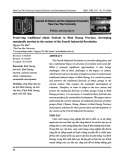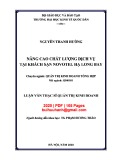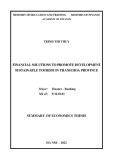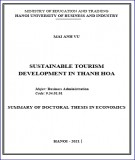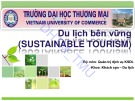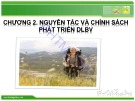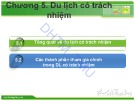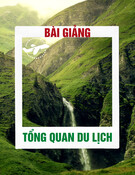
Số 15 - Tháng 02.2025 - Tạp chí KH&CN Trường Đại học Hòa Bình 31
KINH TẾ VÀ XÃ HỘI
OVERTOURISM: AN EMERGING ISSUE
IN HA LONG BAY, QUANG NINH
MA. Do Gia Hung
Hoa Binh University
Corresponding Author: dghung @daihochoabinh.edu.vn
Ngày nhận: 02/12/2024
Ngày nhận bản sửa: 15/01/2025
Ngày duyệt đăng: 24/02/2025
Abstract
Overtourism has emerged as a critical issue in Ha Long Bay, Quang Ninh, as rapid tourism
growth strains natural resources, infrastructure, and local communities. This study explores
the causes, current state, and impacts of overtourism, highlighting environmental harm, socio-
cultural shifts, and reduced visitor satisfaction. Contributing factors include the area’s limited
carrying capacity, localized overload and poor public awareness in tourism participation. Key
solutions involve managing visitor numbers, diversifying tourism products, promoting eco-tourism,
strengthening governance, enforcing environmental regulations, and raising awareness about
responsible tourism. A coordinated approach will help Ha Long balance tourism development with
preserving its World Heritage status for sustainable, long-term appeal.
Keywords: Overtourism, Sustainable tourism, Ha Long Bay, Vietnam.
Quá tải du lịch: Một vấn đề nổi lên ở vịnh Hạ Long, Quảng Ninh
ThS. Đỗ Gia Hùng
Trường Đại học Hòa Bình
Tác giả liên hệ: dghung@daihochoabinh.edu.vn
Tóm tắt
Quá tải du lịch đang trở thành vấn đề đáng quan tâm tại Vịnh Hạ Long, Quảng Ninh, khi sự
phát triển du lịch nhanh chóng gây áp lực lên tài nguyên thiên nhiên, cơ sở hạ tầng và cộng đồng
địa phương. Nghiên cứu tìm hiểu nguyên nhân, thực trạng, đặc biệt là các tác động tiêu cực về môi
trường, văn hóa - xã hội và giảm sự hài lòng của du khách do nạn quá tải du lịch gây ra. Các yếu tố
góp phần dẫn đến quá tải du lịch bao gồm: sức chứa hạn chế của khu vực, tình trạng quá tải cục bộ
và nhận thức bảo vệ môi trường chưa cao của cộng đồng. Những giải pháp như: quản lý số lượng
du khách, đa dạng hóa sản phẩm du lịch, thúc đẩy du lịch sinh thái, tăng cường quản lý, thực thi các
quy định bảo vệ môi trường và nâng cao nhận thức về du lịch có trách nhiệm sẽ giúp Hạ Long cân
bằng giữa phát triển du lịch và bảo tồn di sản di sản một cách bền vững.
Từ khóa: Quá tải du lịch, du lịch bền vững, Vịnh Hạ Long, Việt Nam.
1. Introduction
Vietnam’s tourism industry is
booming, attracting nearly 11.4 million
international visitors in the first eight
months of 2024 – an increase of 45.8%
compared to 2023. Major destinations
like Hanoi, Ho Chi Minh City, Quang
Ninh, and Da Nang draw tourists with
their robust infrastructure and vibrant
events. Quang Ninh, home to UNESCO





